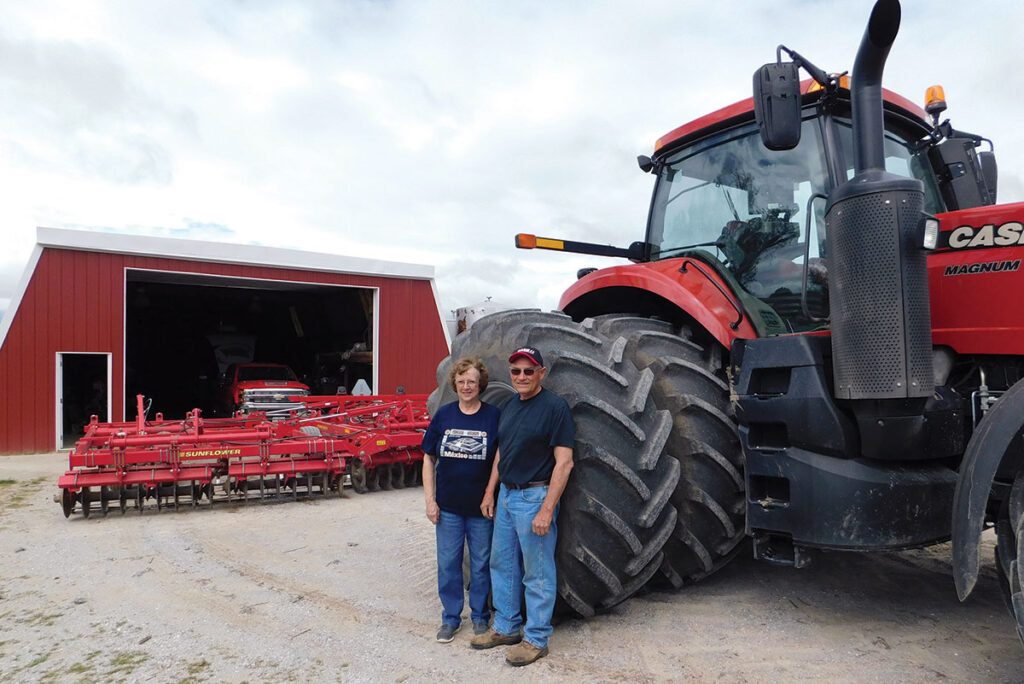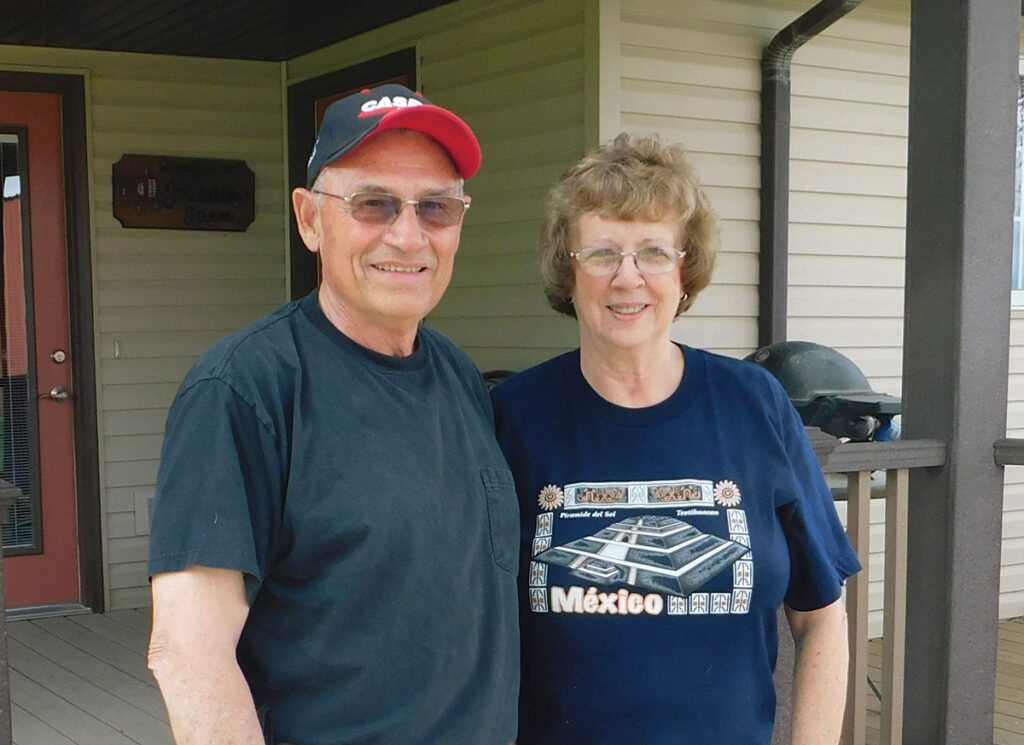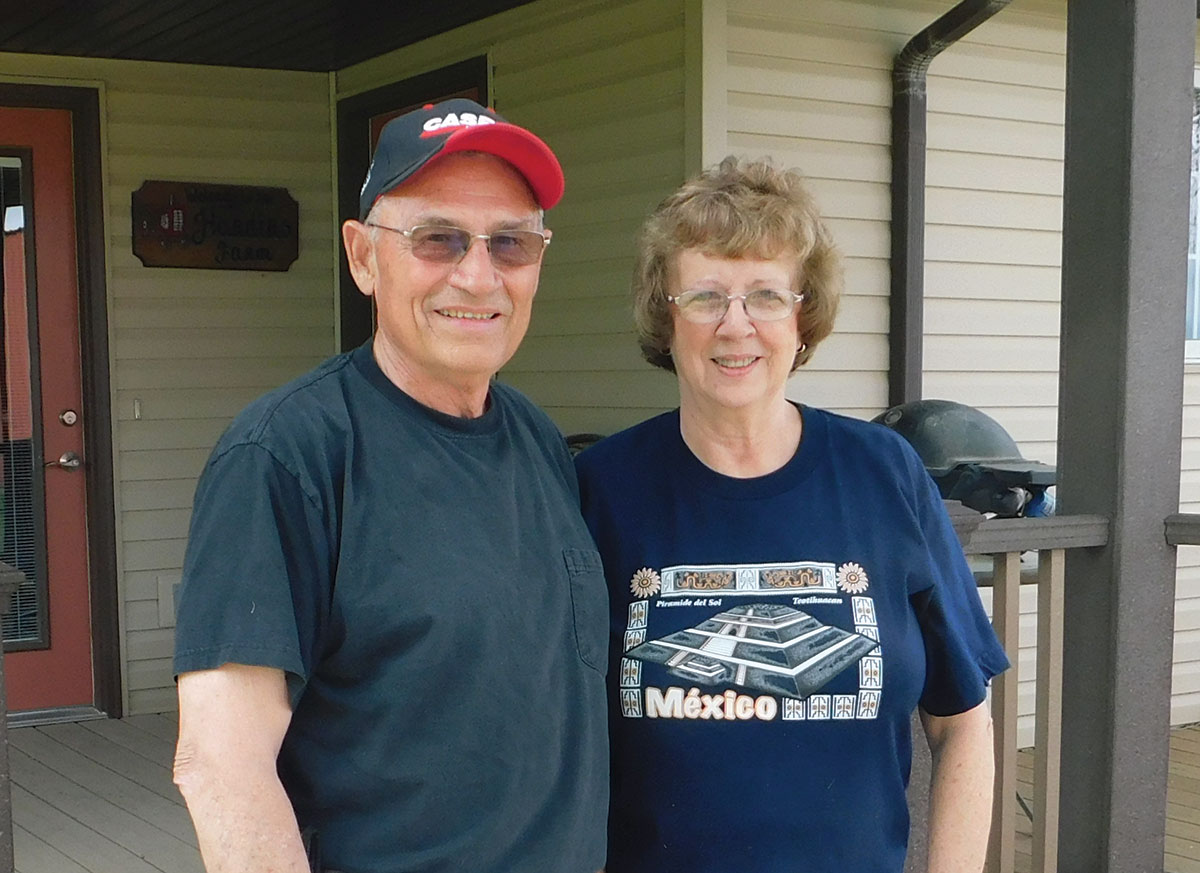
With no real farming experience, Jim and Ronda Hardin started with 80 acres more than 50 years ago
NEVADA, MO. – “We’re old school,” Jim Hardin of rural Nevada , Mo., said of farming for more than 50 years. “Just common sense, but Ronda and I are changing now so our son, Dwayne, son-in-law, Greg Cliffman and grandson and granddaughter, Cory and Kelci Steele can farm with us. For the first 30 years, it was just Ronda and me.”
Ronda and Jim bought the 80 acres where they have built their home and farm in 1970.
“The farm came with a WD40 Allis Chalmers tractor, a pull-type Allis Chalmers combine, and an old iron wheeled, 2-row John Deere planter,” Jim recalled.
The landscape is a bit different these days with at least 16-row planters and the huge tractors and equipment to go with it.
Jim did not grow up on a farm. He worked for Jim Berry, a neighbor, when he was in high school, but farming was not on his mind. After purchasing the farm, both Jim and Ronda quit their paying jobs and began to farm.
“It was a whole lot harder than I thought,” Jim said. “There were times when we wondered if we would make it, but we always worked together well. She had her strengths and I had mine. We made it happen and wouldn’t trade this lifestyle for anything.”
Their three kids, Dwayne, Traci and Jamie showed hogs in 4-H.
“Hogs kept us in business. They paid the mortgage, paid college fees and bought the kids’ first cars.
“We kept about 80 head of hogs on feed during that time,” Ronda said.
Jim never wanted a hired man. He says it is easier to help his kids and their families run their own operations and work the land together. They farm about 1,200 acres corn, 1,500 in beans and 500 in wheat this year.
“We really aren’t wheat farmers, but the price looked pretty good last fall and we put some in,” Jim said.
A side line to their farm is their agricultural hauling business. They have two semis and two full-time drivers. Greg has a truck of his own, also. The trucks are available at harvest time for their own use and for others if they aren’t needed at home.
The family has a cow/calf operation of Red Angus and Simmental cross. “I like the maternal traits and disposition of the red Angus and the growth from the Simmental cows. I think they make better mommas. They have their cows begin calving the first of March and wean the calves when they reach about 500 pounds.” Jim pointed toward his feedlot. “I usually background for two to three months until the calves reach 850 to 900 pounds and sell the steers at the sale barn. I might sell a few cull heifers, but the majority I work back into the herd or sell to local farmers. A good beef heifer will always make a good income.”

Jim and Ronda used to have a herd of about 400, but have downsized the herds, allowing the kids and grandkids to start their own.
“It means a lot to me that they want to do this,” he said.
Ronda no longer runs the farm equipment or feeds the livestock, but cooks for whoever is working on the farm, is the “go-to” person and does the book work.
The Hardin family runs their herds on mainly fescue. Jim said he sowed lespedeza many times in the fescue, but basically, he still has fescue.
“You learn to manage,” he said.
For many years, he has used dry fertilizer, but began using some chicken litter. He said he would not pay more for the litter than he would the dry fertilizer. He hasn’t noticed much difference this first year, but is hoping there will be carry over in the following years. They worm and vaccinate their herds twice a year.
The breeding program for the Hardins is natural.
“I used to try AI, but I’m back to the basics,” Jim said. “We used to calve in the spring and fall, but now only calve in the spring. You don’t have to watch the cows so much in the fall, but it takes quite a bit of money to feed them through the winter.”
The cattle are run through the chutes twice a year for worming and vaccinations.
“I’ve always bought good bulls,” Jim said. “It might be that Ronda didn’t have a washer working or something, but she has always agreed that good breeding pays off in the end. I check those EPDs. I want to know what to expect. You have to have a plan. It doesn’t happen overnight, but planning does help. They breed their heifers at about 14 months so they will calve when they are about 2 years old. I really like the cattle part of the farm better than working the fields. So, I expect I’ll have cattle around as long as I farm.”
Jim said he told the kids and son-in-law at the very beginning that if they wanted to farm, they had to work. It is not an 8 to 5 job, but a lifestyle with every situation different. They should put their blinders on and see what they were good at as no one is good at everything. They should focus on what is best for them.
“Not everyone thinks the same way, or handles situations as we would, but we are making it work,” Ronda said.
When asked if they could change something or do it over, what would they do. “I didn’t thank the good Lord nearly enough for what or who I have,” Jim said ask he looked at Ronda. “Everything we’ve got came from the Lord and I really am thankful.”
“We’ve been blessed,” Ronda agreed.







